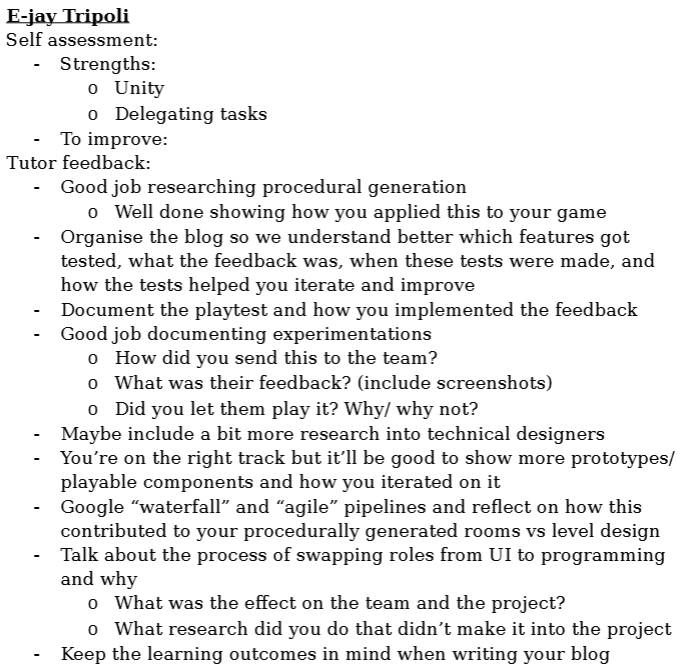During Week 7 of the project, everyone had a formative feedback meeting with Sophie and Vanissa discussing how everyone was doing up until now. During this meeting, we were asked: What we thought we did well and What we thought we could improve on.
I believe I’ve been good at actually implementing systems and mechanics from the GDD, getting hands on with Unity and writing C# script. Creating and developing a procedurally generated room dungeon system was challenging but I felt great about the state it was in, acknowledging its flaws but glad that it was functional.
However, in terms of self-reflection, I feel like I have a bad habit of bearing a lot of the burden in group projects like these. As I have more confidence in my capabilities than I have trust in others around me. Especially when they show a lack of initiative and urge to do the necessary work.
After the talk with Sophie and Vanissa, this was the feedback I was sent on slack:

This feedback I will keep in mind when writing this blog, I am sure reading this you will be able to see the impacts of this feedback throughout this website:
- “Organise the blog so we understand better which features got tested, what the feedback was, when these tests were made, and how these tests helped you iterate and improve”
- Development posts are organised into what features are being developed
- There are screenshots of discussion between team members about feedback
- Playtesters’ feedback are in the Playtests posts (Logs -> Playtests ->)
- This feedback is then mentioned in the development of features
- “Include a bit more research into technical designers”
- “…show more prototypes/ playable componenets and how you iterated on it”
- Shown in the Skill Tree development posts [Videos and iteration explanations]
- Prototypes of enemies [With videos]
- Various iterations of the player
- “Google “waterfall” and “agile” pipelines and reflect on how this contributed to your procedully generated rooms…”
- “Keep the learning outcomes in mind when writing your blog”